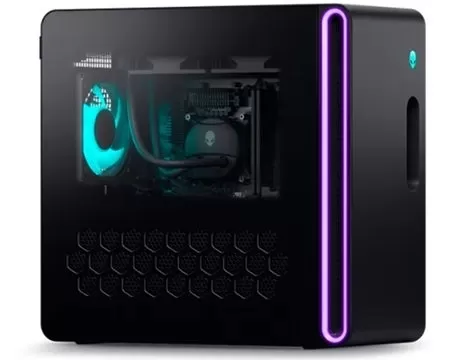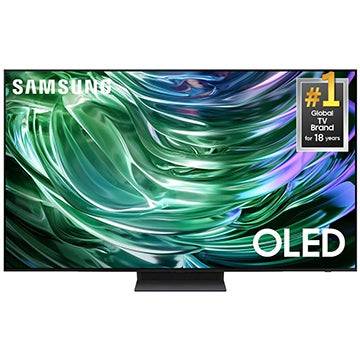A few weeks ago, Microsoft raised the prices of all its Xbox Series consoles and many of its accessories globally, confirming that some new titles would carry an $80 price tag this holiday season. Just days earlier, PlayStation had also increased console prices in certain regions, and not long before that, Nintendo raised the cost of its Switch 2 accessories and announced its first $80 game.
The era of tariff-driven price hikes has officially arrived. Watching these increases unfold across the board can feel overwhelming. In response to Xbox’s announcement, I reached out to industry analysts to better understand what’s happening, how much more expensive gaming might become over the next year, and whether any part of the video game ecosystem is at risk of collapse. The good news? No major platforms or studios are going anywhere.
The bad news? Yes, we’re looking at a future where gamers will pay significantly more—for hardware, software, and everything in between.
Why Is Everything Suddenly So Expensive?
My first question to the analysts was straightforward: why now, and why such drastic increases? As expected, the answer came back loud and clear—tariffs. Rising development and manufacturing costs play a role, but the main driver appears to be the shifting tariff landscape under former U.S. President Donald Trump, who has repeatedly toggled tariffs on and off again.
“Microsoft's consoles are made in Asia, so seriously: who could possibly be surprised about these price hikes?” asked Dr. Serkan Toto, CEO of Kantan Games, Inc. He noted that Microsoft cleverly used the current economic uncertainty as a backdrop to roll out global price increases without facing significant backlash. “It was a strategic move to announce the hikes all at once rather than drip-feeding them over time and across regions.”
Joost van Dreunen, NYU Stern professor and author of the SuperJoost Playlist newsletter, agreed. “Microsoft is ripping off the Band-Aid all at once instead of death by a thousand cuts. Their synchronized global price adjustment looks like a strategic recalibration in response to tariff pressures, rather than incremental market testing. By raising prices across hardware, subscriptions, and first-party titles simultaneously, they're consolidating consumer reaction into one news cycle while protecting their pricing position against competitors in an increasingly service-oriented market where hardware is just the entry point.”
Other analysts echoed the tariff-driven narrative. Manu Rosier from Newzoo pointed out that the timing ahead of the holiday season gives partners time to adjust and consumers time to reset expectations. Rhys Elliott from Alinea Analytics added that while digital software isn’t affected by tariffs, increasing game prices helps offset higher hardware production costs. “If one part of the business sees rising costs, balancing elsewhere becomes necessary. That’s exactly what’s happening here.”
Piers Harding-Rolls of Ampere Analytics highlighted additional factors beyond tariffs: inflation, supply chain costs, and competitive positioning. “There was a large price gap between the Xbox Series S and competing consoles like the PS5 and Switch 2. Even after a 27% increase in the U.S., the Xbox Series S remains $70 cheaper than the Switch 2, giving Microsoft plenty of room for the hike. The biggest percentage increases are in the U.S., which aligns with tariff policy concerns. Elsewhere, increases are more moderate, especially on lower-tier models.”
Is PlayStation Next?
Most analysts believe it’s only a matter of time before Sony follows suit with its own price increases, particularly when it comes to software. Rhys Elliott was especially confident about the rise of $80 games across the board.
“This is just the beginning,” he said. “With Nintendo and Xbox already raising prices, the floodgates are open. Every publisher—first-party, third-party, PC, and console alike—that can charge $80 will do so. The market will bear it. Millions of players have already shown willingness to pay $100 for early access to certain games.”
Elliott explained that higher launch prices will likely lead to more dynamic pricing strategies. “Games launching at $80 will maximize early sales among superfans, then see price reductions over time, creating a longer tail of premium sales. This model already exists, but it will become even more prominent moving forward.”
Daniel Ahmad of Niko Partners noted that Sony has already raised console prices outside the U.S., suggesting that a domestic increase may follow. “Sony has been reluctant to raise prices in the U.S., given its importance as the largest console market. However, with Microsoft making the first move, Sony may feel pressure to act.”
James McWhirter from Omdia added context around Sony’s supply chain risks. “PS5 hardware is largely manufactured in China, exposing Sony to U.S. tariffs. However, since up to half of all consoles are sold during Q4, both Microsoft and Sony had time to rely on existing inventory. With Microsoft having blinked first, the door is now open for Sony to follow with PS5 price increases.”
Video Games Are Surviving—But Will Gamers?
Despite the rising costs, analysts don’t believe these changes will hurt console manufacturers in the long run. Xbox, for example, has been repositioning itself as a service platform rather than a hardware-exclusive experience. Plus, highly anticipated titles like *GTA VI* will continue to drive interest regardless of price.
Harding-Rolls noted, “Xbox hardware revenue has been declining for years, and higher prices will only moderately offset that trend. We expect a temporary boost in Q2 2026 thanks to *GTA VI*, but overall, the delay of that title will impact 2025 performance more than the price increases.”
Elliott added that spending won’t necessarily decline—just shift. “Even in tough economic times, gaming remains price-inelastic. Early adopters will still buy high-end titles, and in-app purchases continue to generate massive revenue. Consumers may become more selective, leaning toward subscriptions, discounted bundles, or live-service games, but total spending is likely to stay flat or grow slightly.”
Rosier agreed, noting that rising prices may accelerate the transition from standalone product purchases to broader ecosystems. “We may see less spending on full-priced titles and more on services or discounted content, but the overall spend could remain stable.”
McWhirter added that publishers will continue to experiment with post-launch monetization. “Frequent discounting, tiered pricing, DLC, and bundling will remain key strategies. Platform holders like Nintendo can adjust pricing models accordingly—expect more Game Vouchers at higher price points to match $80 games.”
Piscatella offered a more cautious outlook. “As everyday costs rise, fewer dollars will go toward discretionary spending like gaming. Players will lean more heavily into free-to-play experiences and devices they already own. Forecasting has never been more uncertain. We could easily see a single-digit or even double-digit decline in gaming spending depending on how other economic factors unfold.”
















